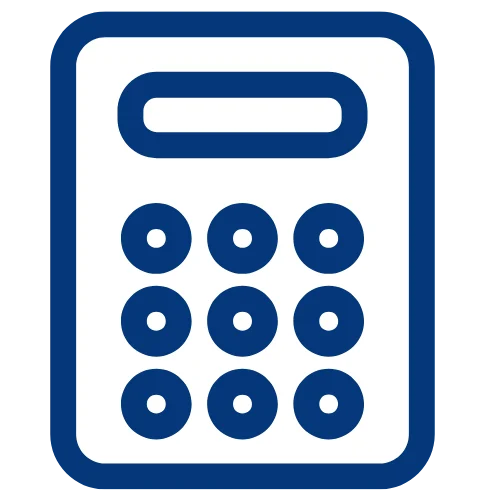CGPA
Calculator
Calculate CGPA with Our CGPA Converter in Just a Click – Fast, Visual, and Accurate Results
CGPA Calculator
Calculate your CGPA based on semester-wise GPA inputs
CGPA Calculator Online
Our Calculator is an easy-to-use tool designed for students to compute their Cumulative Grade Point Average (CGPA) quickly.
It is useful for all grading scales like 4.0, 5.0, or 10.0 grade.
This calculator is ideal for college and university students who want easy, fast, and visual academic insights.
It is also useful when you apply for scholarships, internships, or higher education.


How to Use CGPA Converter?
Step 1: Enter the Number of Semesters
Use the input field labeled “Number of Semesters” to type how many semesters you want to calculate CGPA for (e.g., 6 or 8).
Step 2: Input GPA for Each Semester
For each semester, a field will appear automatically.
Fill in your GPA for each semester in the respective input boxes.
Ensure each value is within the selected grade scale range (e.g., 0–4 for a 4.0 scale).
Step 3: Choose Your Grade Scale
Select one of the available options:
4.0 Scale
5.0 Scale
10.0 Scale
Click on the box that matches your institution’s grading format.
Step 4: Click “Calculate CGPA”
Hit the “Calculate CGPA” button.
Your cumulative CGPA will be computed instantly.
Review Your Results:
The CGPA result appears along with:
A gauge chart to visualize your score.
A bar chart for semester-wise GPA breakdown.
What is CGPA Calculator?
A CGPA Calculator is a digital tool students use to compute their Cumulative Grade Point Average from individual semester grades. The calculator combines all your semester CGPAs into one comprehensive score that reflects your overall academic performance.
These calculators support multiple grading scales including 4.0, 5.0, and 10.0 systems, making them versatile for students worldwide. Each educational institution may follow different grading policies, and these calculators adapt accordingly.
The tool eliminates manual calculation errors and saves valuable time. Students no longer need to perform complex mathematical operations to determine their academic standing.
It plays a crucial role when applying for scholarships, internships, study abroad programs, and job applications where academic performance metrics are required. Many opportunities establish minimum CGPA thresholds, making accurate calculation essential.
For students looking to translate academic performance, our CGPA to Percentage Calculator simplifies the process in just one step.
What Are the Different Grading Scales Used Around the World?
Grading systems differ from one country to another, and even between institutions within the same country.
Whether you’re a student planning to study abroad, applying for scholarships, or just trying to understand your academic standing, it is important to know how different grading scales work.
Below, we explain the most common grading scales used worldwide and how they compare.
The 4.0 GPA Scale (Common in the United States)
The 4.0 scale is the most widely used GPA system in U.S. high schools, colleges, and universities. Here’s a quick breakdown:
| Grade | GPA Value | Percentage Range | Description |
|---|---|---|---|
| A | 4.0 | 90–100% | Excellent |
| B | 3.0 | 80–89% | Good |
| C | 2.0 | 70–79% | Average |
| D | 1.0 | 60–69% | Below Average |
| F | 0.0 | Below 60% | Failing |
💡 Note: Many schools use plus/minus grading, meaning you might see grades like A– (3.7) or B+ (3.3).
The 5.0 Grading Scale (Used in Parts of Asia and Europe)
Some universities in countries like Germany, Russia, and certain Asian nations follow a 5.0 grading scale. This system often rewards academic excellence with a full 5.0 score.
| Grade | GPA Value | Percentage Range | Description |
|---|---|---|---|
| A | 5.0 | 90–100% | Outstanding |
| B | 4.0 | 80–89% | Very Good |
| C | 3.0 | 70–79% | Satisfactory |
| D | 2.0 | 60–69% | Pass |
| E | 1.0 | 50–59% | Conditional Pass |
| F | 0.0 | Below 50% | Fail |
This scale emphasizes a broader spectrum of achievement while still identifying failure.
The 10.0 CGPA Scale (Popular in India and Other Countries)
The 10-point CGPA scale is commonly used in India and adopted by various institutions globally. It’s a simplified system but gives a clear idea of a student’s academic standing.
| CGPA | Description |
|---|---|
| 10 | Outstanding |
| 9 | Excellent |
| 8 | Very Good |
| 7 | Good |
| 6 | Above Average |
| 5 | Average |
| 4 | Below Average |
| < 4 | Fail |
🎯 A CGPA of 7.5 or above is often considered competitive for higher education and international applications.
A good tool lets you switch between these scales effortlessly, even converting your score from one system to another – particularly helpful when you apply to international programs.
Difference Between CGPA vs GPA:
Students often confuse between CGPA and GPA, but these grading systems work differently.
Table of Difference Between CGPA and GPA:
| Aspect | GPA (Grade Point Average) | CGPA (Cumulative Grade Point Average) |
|---|---|---|
| Definition | Average grade points for a single semester or year | Average grade points across all completed semesters |
| Time Frame | Short-term (one semester or academic year) | Long-term (entire academic program) |
| Purpose | Measures recent or current academic performance | Tracks overall academic performance |
| Calculation Basis | Based on subjects taken in one term | Based on all subjects across multiple terms |
| Scale Used | Typically 0–4 or 0–10 depending on institution | Typically 0–4 or 0–10 depending on institution |
| When It’s Useful | Helpful for identifying areas of improvement quickly | Useful for overall assessment like placements or higher studies |
| Monitored By | Students aiming to boost short-term academic results | Students focusing on cumulative academic growth |
Key Features of a CGPA Calculator
Modern calculators offer numerous benefits that make grade tracking simple:
- Semester-wise Input – Enter GPA scores from each completed term
- Multiple Scale Options – Switch between 4.0, 5.0, and 10.0 grading scales
- Instant Results – Get your cumulative score immediately after data entry
- Visual Representations – View your progress through graphs and charts
- Percentage Conversion – Transform your CGPA into equivalent percentage scores
- User-friendly Interface – Navigate easily with minimal learning curve
- Credit Hour Weighting – Account for courses with different credit values
- Performance Tracking – Monitor improvements or declines across semesters
The best calculators provide both simplicity for beginners and advanced features for those needing detailed analysis of their academic record.
Who Should Use CGPA Calculator?
It benefit various student populations:
- University Undergraduates – Track progress toward graduation requirements
- Engineering Students – Monitor performance in technical programs with strict GPA minimums
- Business School Attendees – Maintain the high academic standards expected in competitive programs
- Medical Students – Keep pace with the rigorous grading expectations
- Online Learners – Manage grades across virtual courses and programs
- Graduate Students – Ensure maintenance of minimum requirements for advanced degrees
Beyond students, academic advisors and counselors use these tools to guide students effectively. Faculty members may also recommend calculators to help students visualize their current standing and set goals for improvement.
Your University’s Calculator
Browse our comprehensive list of university-specific CGPA calculators
Why It Matters for Students
It deliver significant advantages for academic success:
- Performance Monitoring – Track grades systematically across multiple semesters
- Scholarship Qualification – Verify eligibility for merit-based financial assistance
- Strategic Planning – Make informed decisions about course loads and study focus
- Time Efficiency – Generate results instantly without manual calculations
- Goal Setting – Establish clear targets for academic improvement
- Stress Reduction – Eliminate uncertainty about academic standing
- Application Readiness – Have accurate information prepared for opportunities
Students who regularly monitor their CGPA gain better awareness of their academic trajectory and can take corrective actions when necessary before small issues become significant problems.
Final Thoughts
The CGPA tool appears simple on the surface, but it plays a crucial role to help students track their academic performance.
It provides accuracy, trust, and speed that saves precious time.
Students no longer wait weeks for report cards to understand their academic progress.
Whether you are just starting college or preparing for your final semester to track your performance becomes easy.
Students who check their CGPA regularly never lose sight of their academic standing. A CGPA calculator from SGPA takes your semester scores and gives your overall grade point average.
Academic decisions become easier when you see exactly how you are performing.
Every serious student needs this tool as part of their academic toolkit.
